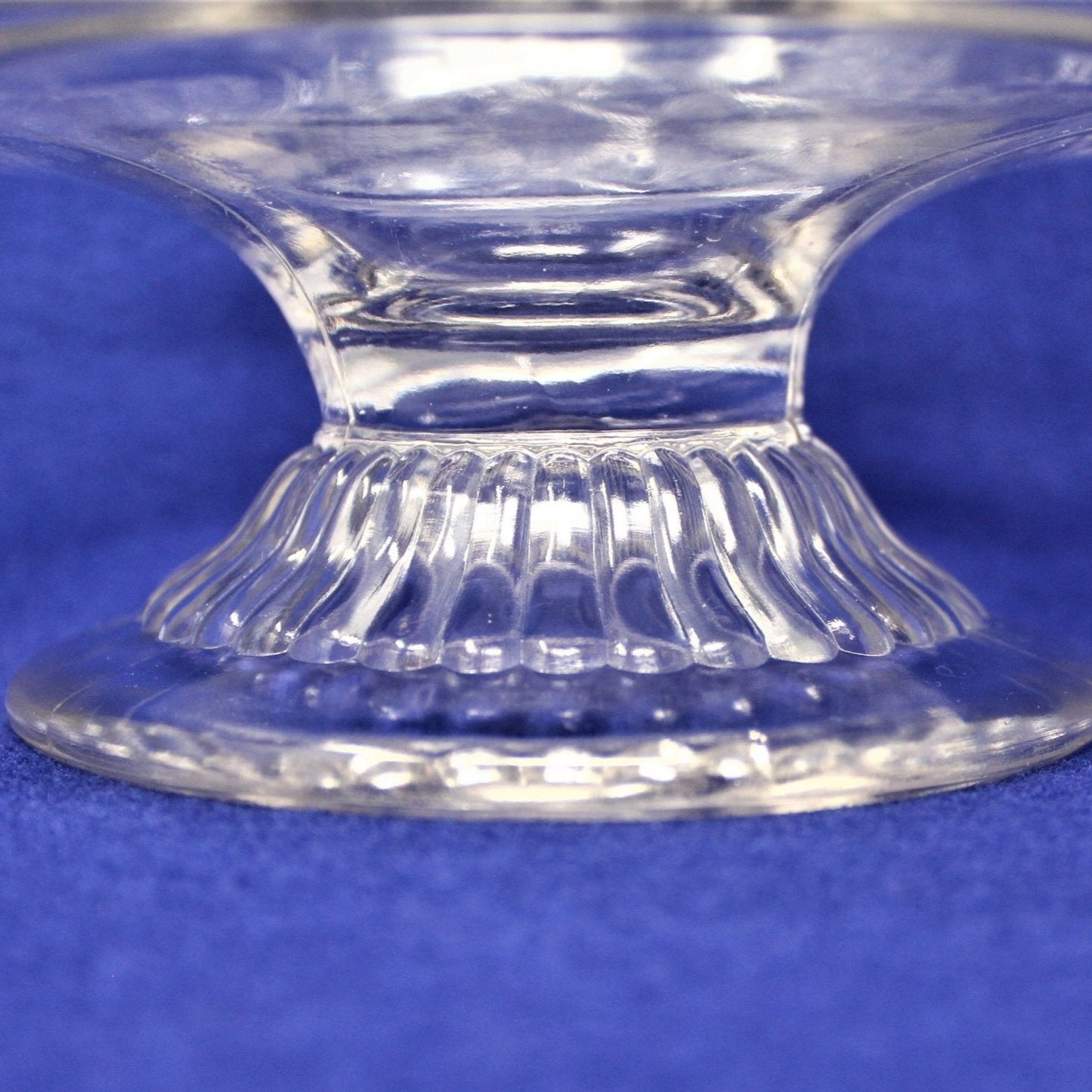Burlington Glass Works
Compote / Footed Bowl, Burlington Glass Works, Canadian Pattern, Antique
Compote / Footed Bowl, Burlington Glass Works, Canadian Pattern, Antique
Couldn't load pickup availability
- Antique Glass Footed Bowl, Embossed Design Canadian Wilderness Scene by Burlington Glassworks, Compote, Home Decor, Serveware, RARE, (Discontinued)
- Made in Hamilton, Ontario, Canada
- Antique: 1874 - 1897
- Details: This is a lovely clear glass footed bowl, candy dish/ compote by Burlington Glass Works in Canada. The bowl has an embossed pattern, different scenes divided by ivy leaves and tiny dots, known as stippling. Three separate scenes: a sailboat in a lake, a village surrounded by mountains, and a river bordered by large rocks. All look like beautiful Canadian wilderness. The foot has long, separated bands. Great as a serving piece, a candy dish, for soaps in the bathroom, with potpourri, or lovely on its own.
- Material: Glass
- Dimensions: 4.5 inches Tall, 7.0 inches Wide and 2.0 inches Deep
- Condition: Vintage - Used. Excellent condition. There are no chips, cracks, or scratches, amazing condition considering its age. Please review all pictures and make sure you love this item before purchasing, we can't accept returns. Please remember these are ANTIQUE and VINTAGE items, they are NOT new, every effort has been made to show any scratches, wear and tear and imperfections.
Burlington Glass Works, was founded in 1874 in Hamilton, Ontario. It was named Burlington Glass Works because it overlooked the Burlington Bay from Hamilton, Ontario. This company was one of the most important 19th century glass houses in Canada in terms of the variety and quality of its production. From 1874 to about 1897 skilled artisans produced lamps, tableware, glass vessels and containers. Glass-production techniques included free-blowing, mould-blowing and pressing into a mould. The glassware was decorated using different methods like: cutting, painting, sand-blasting, acid-etching and wheel-engraving. From 1840 to 1890 the glass business was a time of uncertainty and instability; anyone attempting to enter this market had to to contend with strong competition from the American companies, unfortunately, this led to the bankruptcy of Burlington Glass Works. Hamilton Glass Works bought Burlington Glass Works initially to discourage new competition and it became the most productive of the two plants. In 1892 fire severely damaged the Burlington Glass Works facility and it was closed in 1897.
Share
















